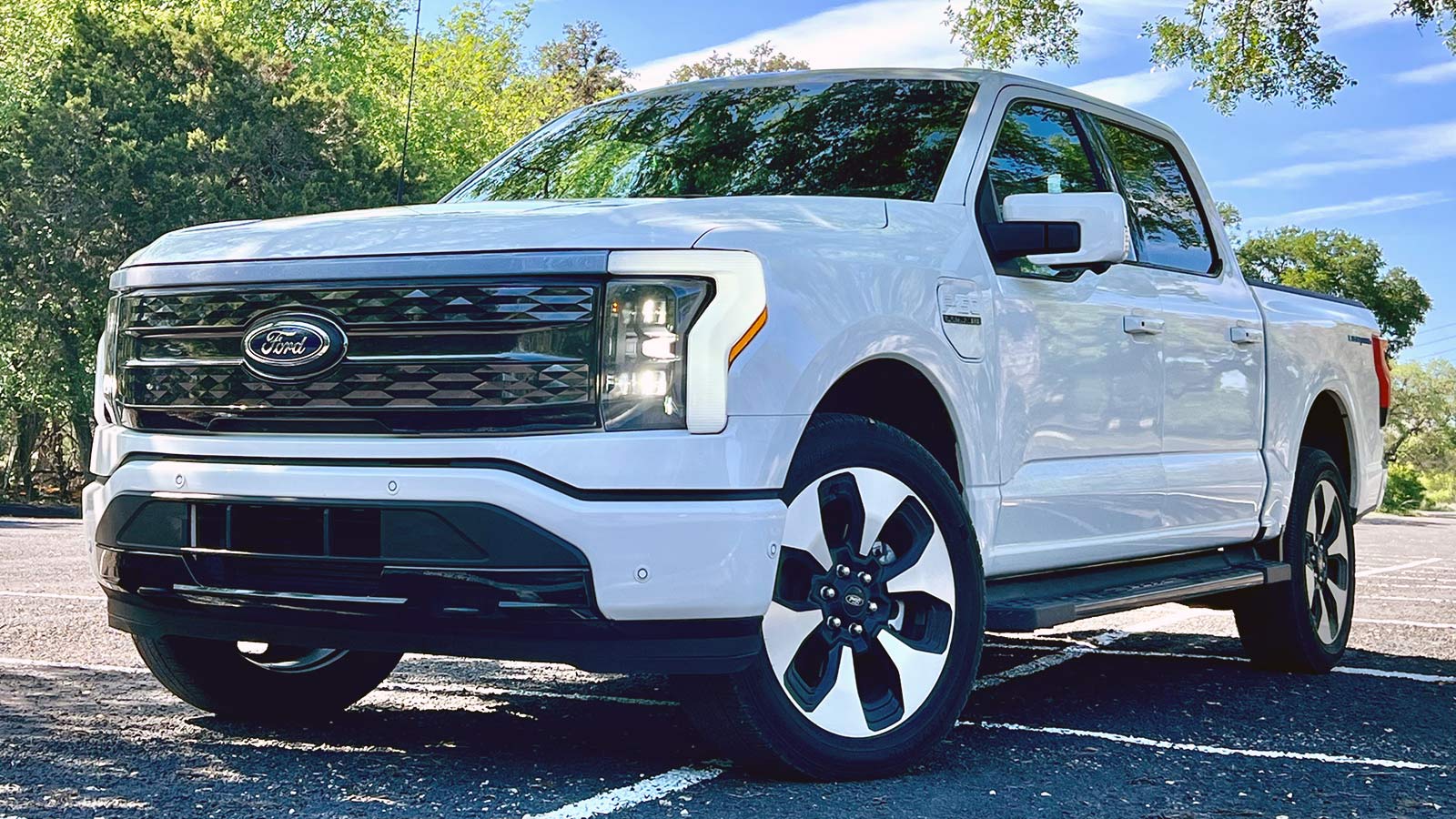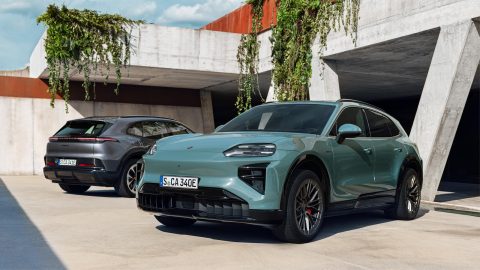Until now, every EV test drive experience I’ve conducted has been short and sweet, like the flavoring in a stick of Fruit Stripes gum. Now, I had seven days to savor the experience in Ford’s first all-electric pickup truck, the Ford F-150 Lightning, one of the most hyped EVs on the market. Not just any F-150 Lightning, the top-tier Platinum trim package with all the interior bells and whistles. There was just one problem, and it had nothing to do with the vehicle itself.
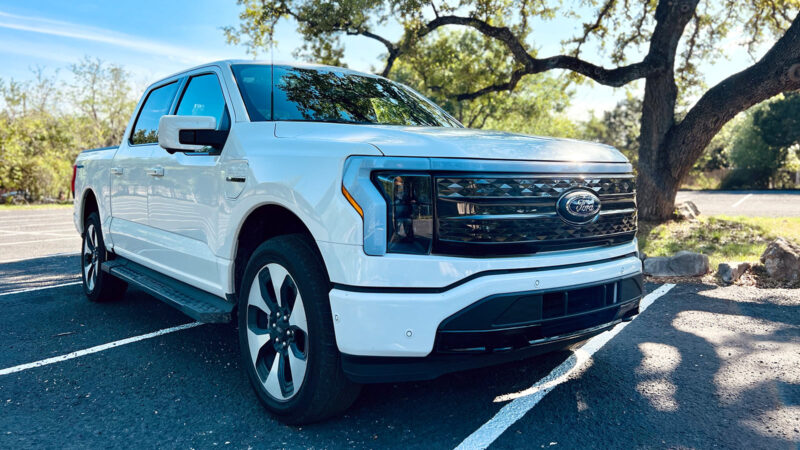
The problem being I live in an apartment complex with no access to a garage. Plus, San Antonio, Texas, the second largest city in Texas and seventh largest in the United States, only has one public supercharging station (at the time of this publication). So, while I had the F-150 Lightning at my disposal, the nearest place I could fill up its batteries involved a one-hour round-trip commute.
Nevertheless, I made a personal promise to conduct this road test as a non-biased professional automotive journalist. To do so, I had to put aside my loyalty to the internal combustion engine and step into the Ford F-150 Lightning Platinum’s luxurious interior with an open mind and a mildly heavy foot.
Side Quest for a Power Source
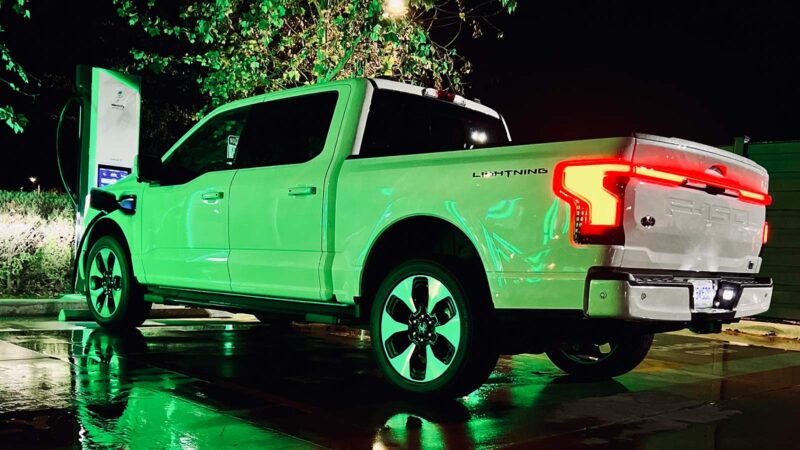
The most significant inconvenience during the weeklong EV road test was finding a non-Tesla supercharger in the city of San Antonio, TX. I was shocked to find only one Electrify America hyper charger station in the Alamo city. All other supercharger stations belonged to Tesla, which is not compatible with the F-150 Lightning’s hardware, like comparing Apple and Samsung. Furthermore, other charging stations did not offer the high-octane wattage needed to charge an EV from low battery to full within a reasonable time frame.
If I had a home with a driveway or a garage, I could use the Mobile Power Cord 240v adapter included with the F-150 Lightning and plug-in like charging a smartphone. That’s the biggest advantage EVs have over internal combustion, the convenience of refueling at home like a personal gas station minus the scratch-off tickets and slushy machine. Moreover, the hyper charger station near my apartment only charges vehicles up to 80%, not the full 100.
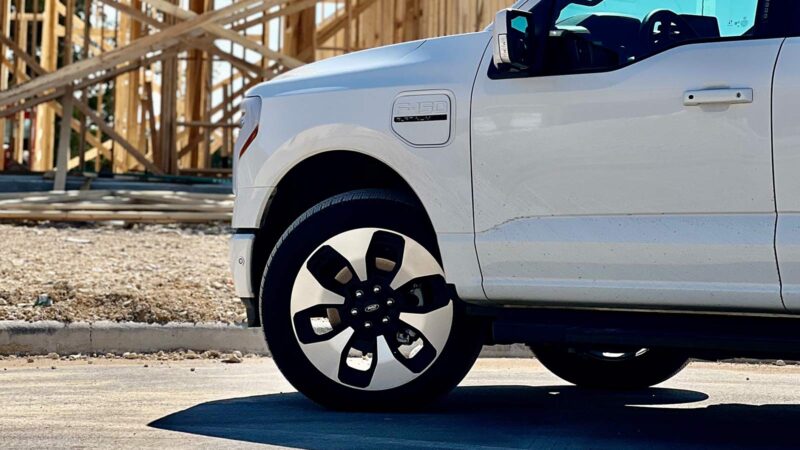
Photo by Jesus R. Garcia 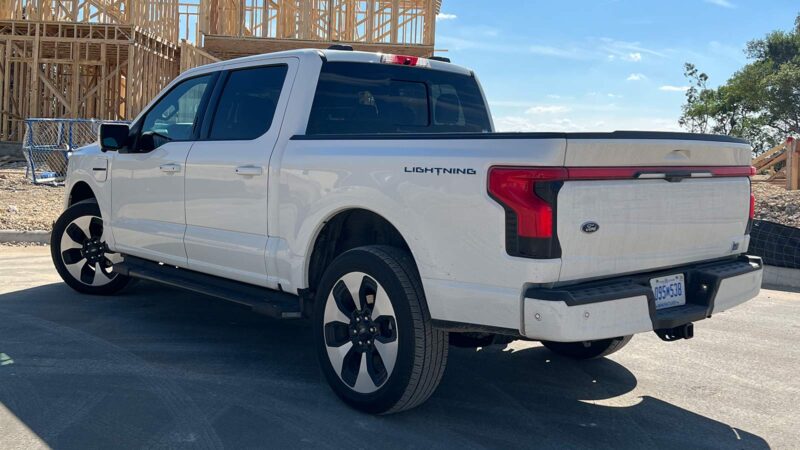
Photo by Jesus R. Garcia
All this meant I got to feel the full bore of range anxiety while driving the F-150 Lightning because I knew that a low battery meant investing at least 2 hours of my day. One hour to get to and from the station and about 45 minutes of charging from low to almost full.
On the bright side, charging waiting time provided ample opportunity to enjoy the massaging seats, standard on the Platinum, play with the F-150 Lightning’s jig-saw puzzle games, and digital drawing features on its massive 12-inch infotainment screen. I also scribbled notes for this review on my notepad using the truck’s work surface center console.
All this meant I got to feel the full bore of range anxiety while driving the F-150 Lightning because I knew that a low battery meant investing at least 2 hours of my day.
One of the times I had to recharge was on a Sunday afternoon. Because this Electrify America charging station is located at a Walmart supercenter, the charging ports were crowded when I arrived. But credit to San Antonio’s car community for the variety of EVs I saw, like the Rivian R1T, Porsche Taycan, Chevrolet Bolt, Ford Mustang Mach-E, and Audi Q4 e-Tron, to name a few.
The only charge port available had a broken credit card reader. Darn! This meant I had to pay over the phone, which anyone living in 2023 can already assume the first-world problem that creates. Graciously, the voice on the line was a human, so the process was quick and painless. I give thanks to Electrify America for creating jobs in that aspect.
Political or Hooligan Vandalism?
Those of you who are still rewatching old episodes of Top Gear can recall a popular segment in which Jeremy Clarkson and James May joke about unplugging EVs from their charging stations. A prank for people who want to watch the world burn but are too dumb to strike a match. It occurred in episode two of season 18, which aired back in 2012.
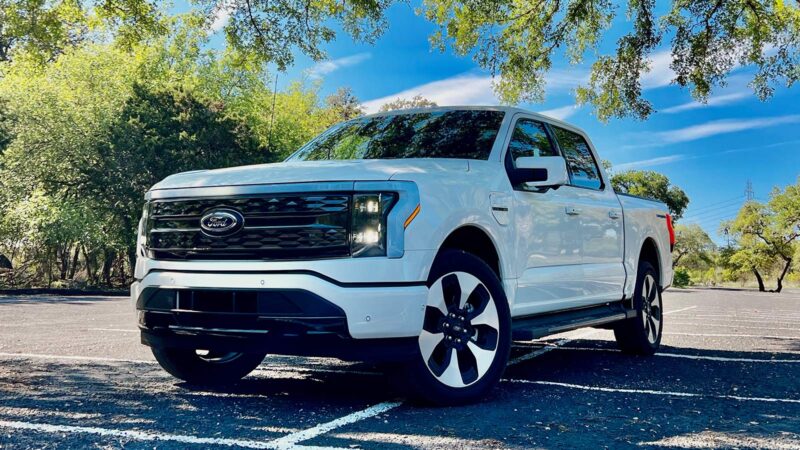
I laughed the first time I watched it, never thinking it would happen to me. That was until I drove the Ford F-150 Lightning to the small scenic town of Bandera, Texas. I parked the EV truck in a free parking lot with two charging stations. I plugged in and invited my parents to a nice steak dinner to celebrate their wedding anniversary. Upon our return, we saw the charging cable on the floor at a far enough distance that you could tell it was tossed aside.
I would never wish harm upon anyone, but I hope whoever unplugged that charger cable uses hand sanitizer while forgetting they have a paper cut.
Now, people being terrible is nothing new. But I couldn’t help thinking about the kind of person that would do this. Was an angsty teenager looking for kicks while hitting a vape pen? A scorned oil man with lizard skin boots driving a King Ranch dually, feeling a sense of betrayal. But, sadly, if it were my money on the table, I’d bet it was a middle-aged man who watches too much network news and violates the flag code by wearing stars and stripes underwear.
I would never wish harm upon anyone, but I hope whoever unplugged that charger cable uses hand sanitizer while forgetting they have a paper cut.
The Heavy-Weight Problem with EVs
The problem with it is the same one plaguing a lot of EVs today, weight and range. This electric pickup truck must haul a battery that weighs 1,800 pounds. That’s nearly a ton for a vehicle marketed as more energy efficient than internal combustion.
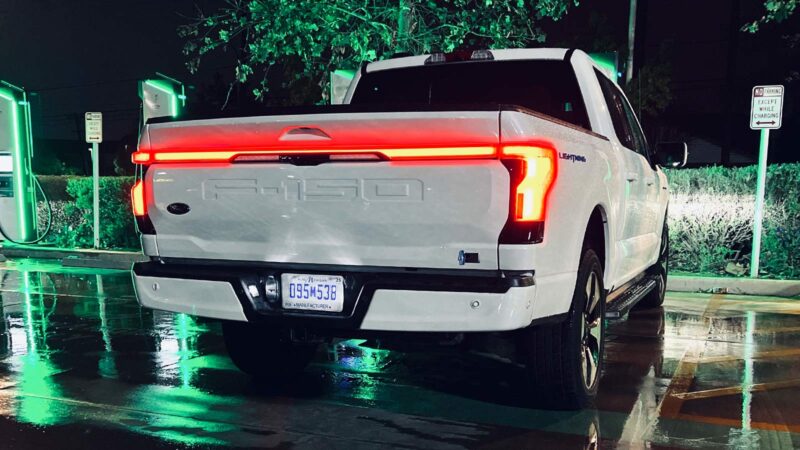
Photo by Jesus R. Garcia 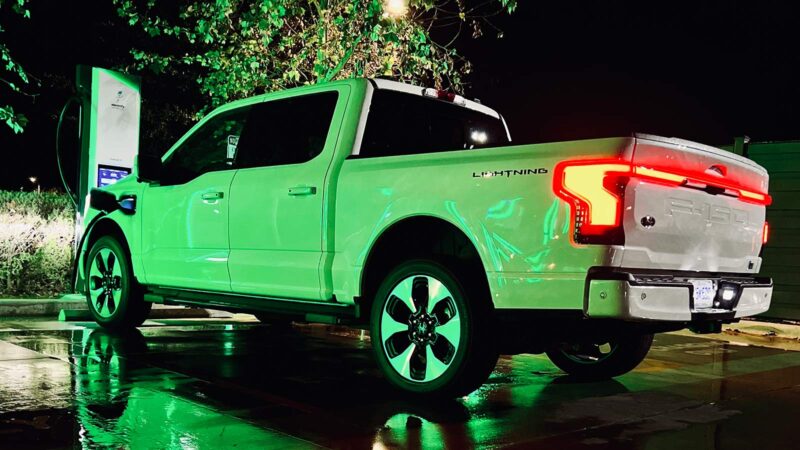
Photo by Jesus R. Garcia 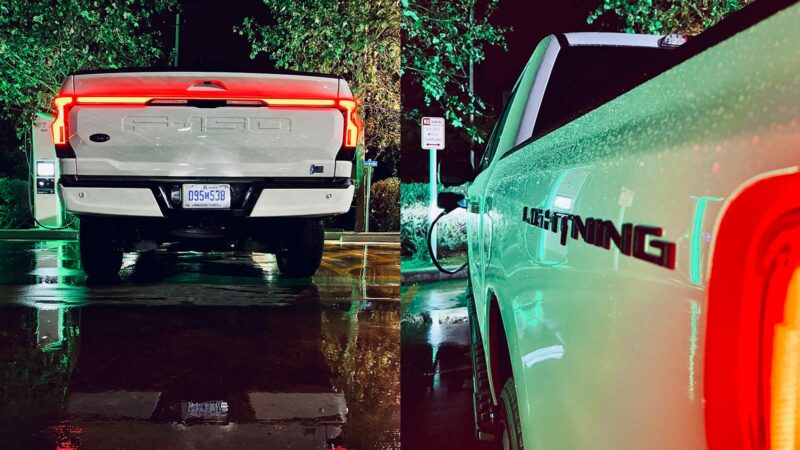
Photo by Jesus R. Garcia 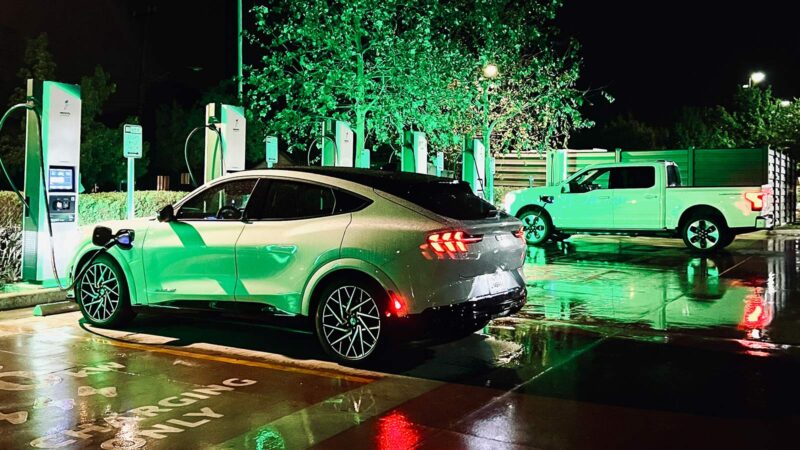
Photo by Jesus R. Garcia
Just because it’s not rolling coal or burning oil doesn’t mean it’s saving a drowning polar bear. Not when you still need to mine the Earth for resources used to make these batteries. But I’m optimistic that the ever-increasing rate of technology will produce a better battery that weighs less, uses fewer resources, and can one day charge at the same rate it takes to fill up an 18-gallon fuel tank with diesel. Until then, I can say that the Ford F-150 Lightning is a solid foundation.
A Solid Foundation for EV Trucks
It’s unfair to criticize the Ford F-150 Lightning solely because I had to wait 45 minutes for it to charge. Or that it used up 100 miles of range during a 60-mile road trip hauling nothing more than me, my parents, and my mother’s purse. The F-150 Lightning’s digital range gauge says 300 miles on a full charge. But just like with gasoline, that range ultimately depends on the weather, terrain, and the weight of your right foot. Based on my experience driving this EV truck, that 300-mile range translates to about 230 actual miles of careful driving with the occasional instant torque pull.
It’s unfair to criticize the Ford F-150 Lightning solely because I had to wait 45 minutes for it to charge. Or that it used up 100 miles of range during a 60-mile road trip hauling nothing more than me, my parents, and my mother’s purse.
Ford increased the price of the F-150 Lightning in 2023. The starting price for the base Pro model is $59,974, followed by the XLT at $63,474, then the Lariat at $75,974. After that, there is a significant leap with the Platinum starting price at $98,074. Not exactly blue-collar prices for the electrified blue oval.
Nevertheless, Ford has proven it can produce an electric truck for everyday use. It can haul, tow, and has room for the whole family. Moreover, it’s no different to drive than a gasoline F-150, apart from the silent, sensational acceleration guaranteed to make your occupants exclaim with surprised delight.
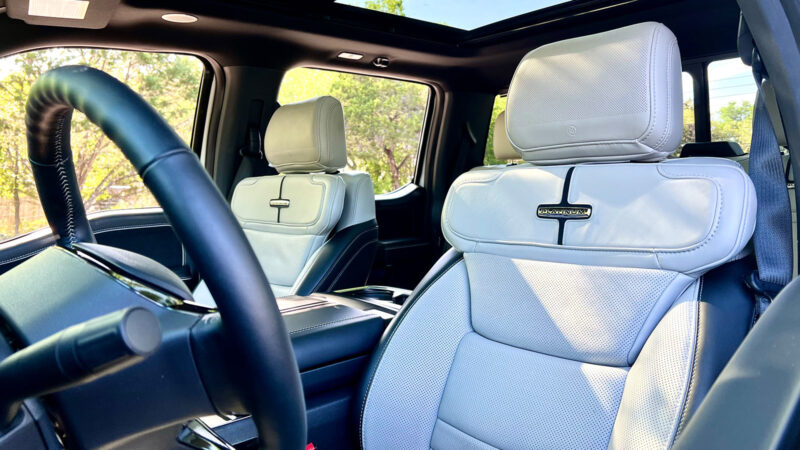
Photo by Jesus R. Garcia 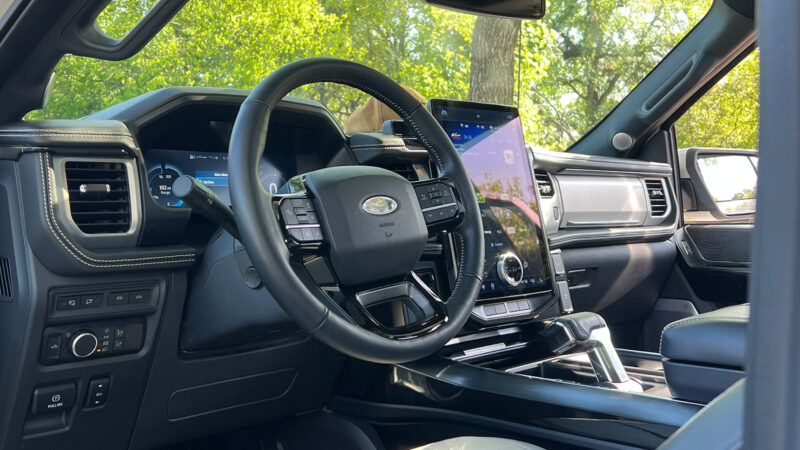
Photo by Jesus R. Garcia 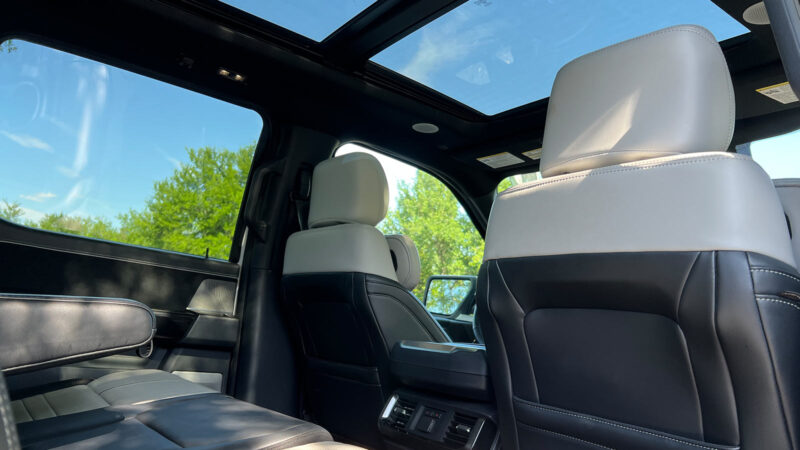
Photo by Jesus R. Garcia
It’s very comfortable to drive. The frunk is spacious enough to rival the trunk in a mid-size airport rental and can fit 400 pounds of stuff which I tested with a load of miscellaneous items in the studio apartment-sized trunk of my ancient Ford Crown Victoria. Furthermore, the Ford BlueCruise hands-free driver assist system raises the bar for how comfortable modern vehicles can make highway travel.
Most of Texas, especially San Antonio, is not ready for EVs to replace ICE, and it may be a while before the entire nation is prepared, equipped, and willing to make the switch wholeheartedly. The silver lining is that it gives OEMs breathing room to develop better EVs that look, perform, and can go the distance at a competitive price.

